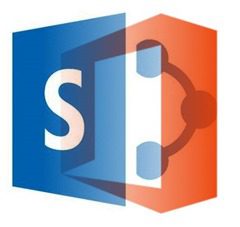In Defense Of On Prem
Back in April, I wrote a blog post where I shared my perspective on what is happening with the roadmaps and positioning of SharePoint, Office365 and Yammer, and Microsoft’s overall messaging for the platforms. My underlying message was that change is happening, most of it directionally correct, that there have been some failures on the messaging front – but that Microsoft would quickly adapt and change to the problems being identified by customers and partners, which would do even more to accelerate this change toward the cloud. One of the statements I made, and for which I took some heat, was that Microsoft “underestimated the demand for on premises and hybrid deployments.”
I stand by that statement… but understand my perspective:
 I had been working for a content infrastructure software company (which was acquired by my current company, Metalogix, which is the biggest content infrastructure ISV) which has a global reach, and I have a view into some of the largest SharePoint deployments in the world, with some understanding of what they are trying to achieve with their SharePoint platforms.
I had been working for a content infrastructure software company (which was acquired by my current company, Metalogix, which is the biggest content infrastructure ISV) which has a global reach, and I have a view into some of the largest SharePoint deployments in the world, with some understanding of what they are trying to achieve with their SharePoint platforms. - My experience with collaboration, social, and knowledge management platforms stretches back into the mid-nineties, back to when I helped build and deploy several large corporate portals, and I am keenly aware of the deep line of business (LOB) application and other work stream integrations that happen within these environments.
- Add to this my experiences with both large (Pacific Bell, Hewlett-Packard) and small organizations (several startups), and the common issue across them of sometimes having to wait on new technologies, pushing instead to get the most out of an older technology until the cost of not moving exceeded the cost/time/pain of moving.
- And then there is my role as an Evangelist – part of which is to constantly watch what is coming up over the horizon, and using that knowledge/perspective/thought-leadership to help shape the path of my company’s products, as well as to help customers understand how to get the most value out of what they have today, and what is coming their way.
With that perspective, you can see why it may appear that myself and others sometimes seem like we’re pushing back on the latest/greatest technologies, when the reality is that we understand better than most the impacts of these new technologies – and how they can (and can’t) extend the value of what our customers have in place today.
There are those who think that because some of us in the community push back on the market positioning that places cloud over on premises that somehow we don’t “understand.” Quite the contrary, we understand the marketing messaging and where Microsoft is trying to take the company and the technology, but my job is to stand up for the requirements of my customers, and help them to parse through what is marketing and what can help them derive value from what is coming out of Redmond. And most of the time, those customers want to extend the platforms and investments they’ve made to date BEFORE they build out something entirely new. Nothing wrong with getting a return on your investment. The challenge for ISVs like my company, of course, is to help companies through this transition – offering solutions for both on prem installs, for pure cloud solutions, and for everything in between.
Honestly, I feel completely validated by the messaging that came out of WPC in Houston this year, which essentially backed up my position that on premises deployments of SharePoint will continue, and that a large portion of current customers will either never move to the cloud (35% of current customers), or will do so over a slow ramp through hybrid solutions (50% in the next 3 to 5 years) so that they can achieve their ROI, as well as transition people, policies, and technologies toward the cloud. There are tremendous achievements being made by the Microsoft product teams, and value being created for customers with every iterative release, and included in every announcement – but this transition is going to take time, and SharePoint on premises will continue to be a force to be reckoned with in the industry.
If you’ve never seen one of my conference sessions, I tend to take a business analyst / project management perspective on most topics. At the center of every PM plan is the need to identify and mitigate risks – the earlier you can detect them and have a plan in place for each, the lower the cost of mitigating those risks. While we may not have a crystal clear roadmap of what will come in the next SharePoint on premises release (yes, there will be more on prem releases, per Microsoft) nor a release date for v.Next, we all have a macro-view of the move toward the cloud, and its time for all of us to start identifying the risks for our SharePoint environments, and building out those mitigation plans.





